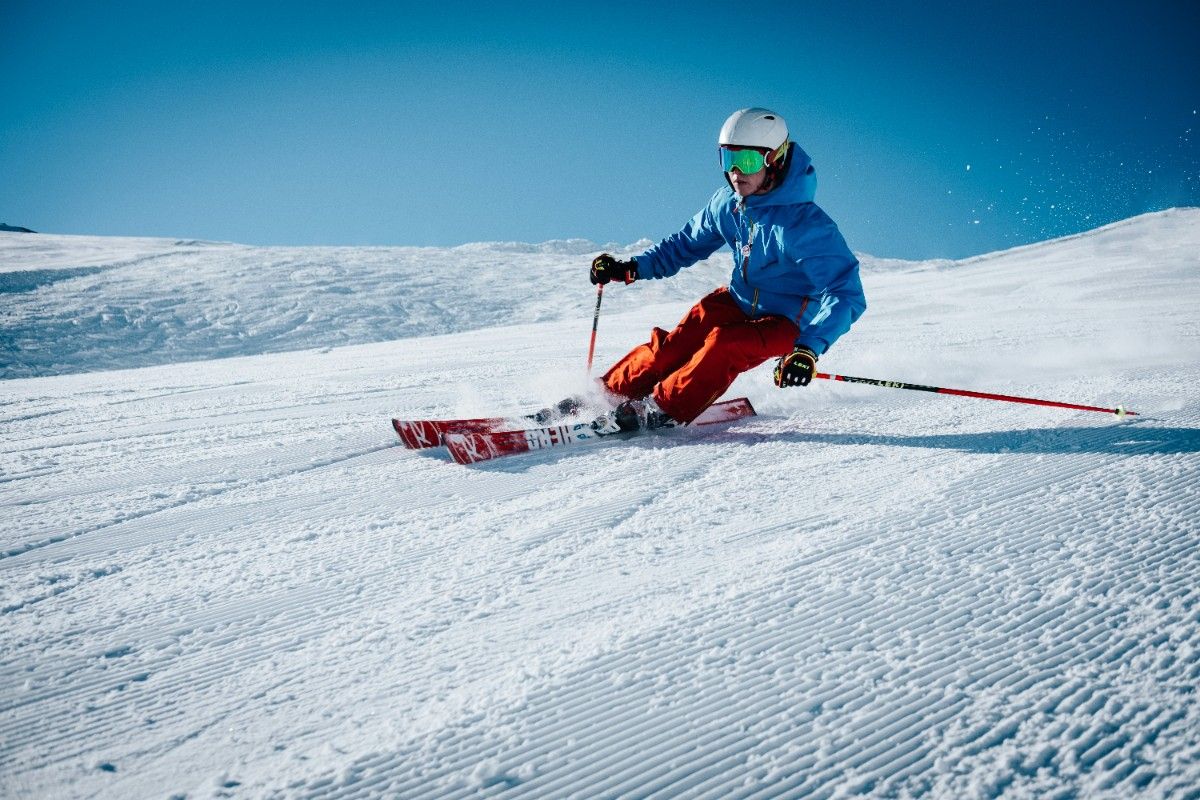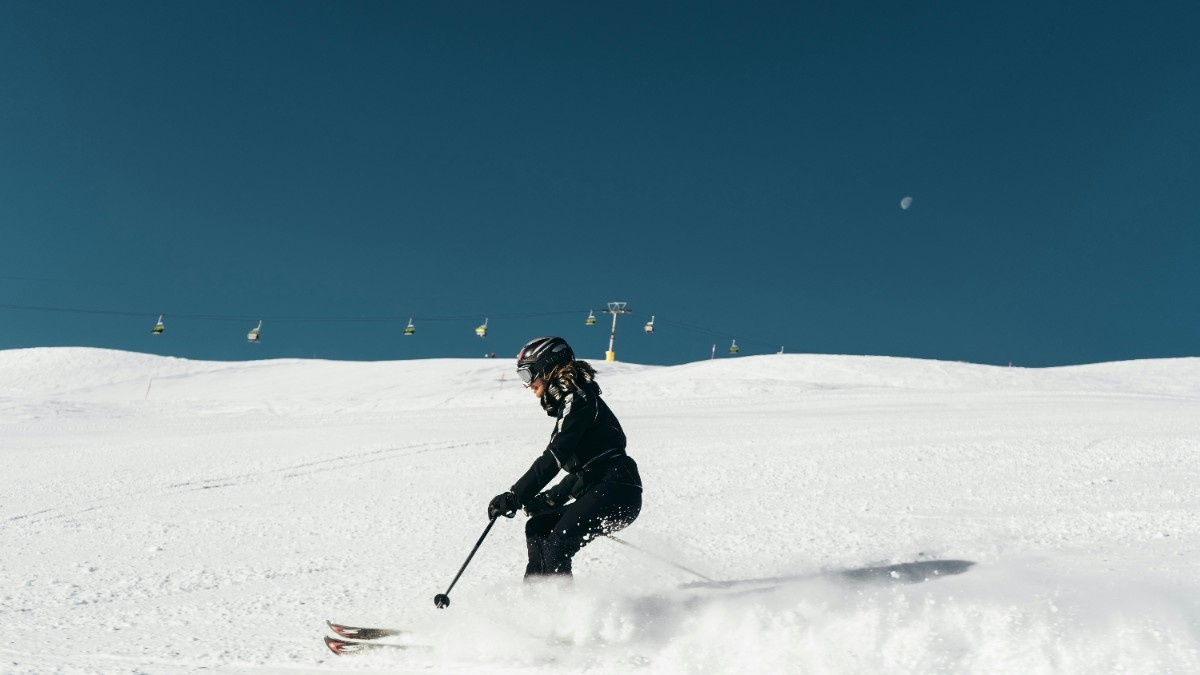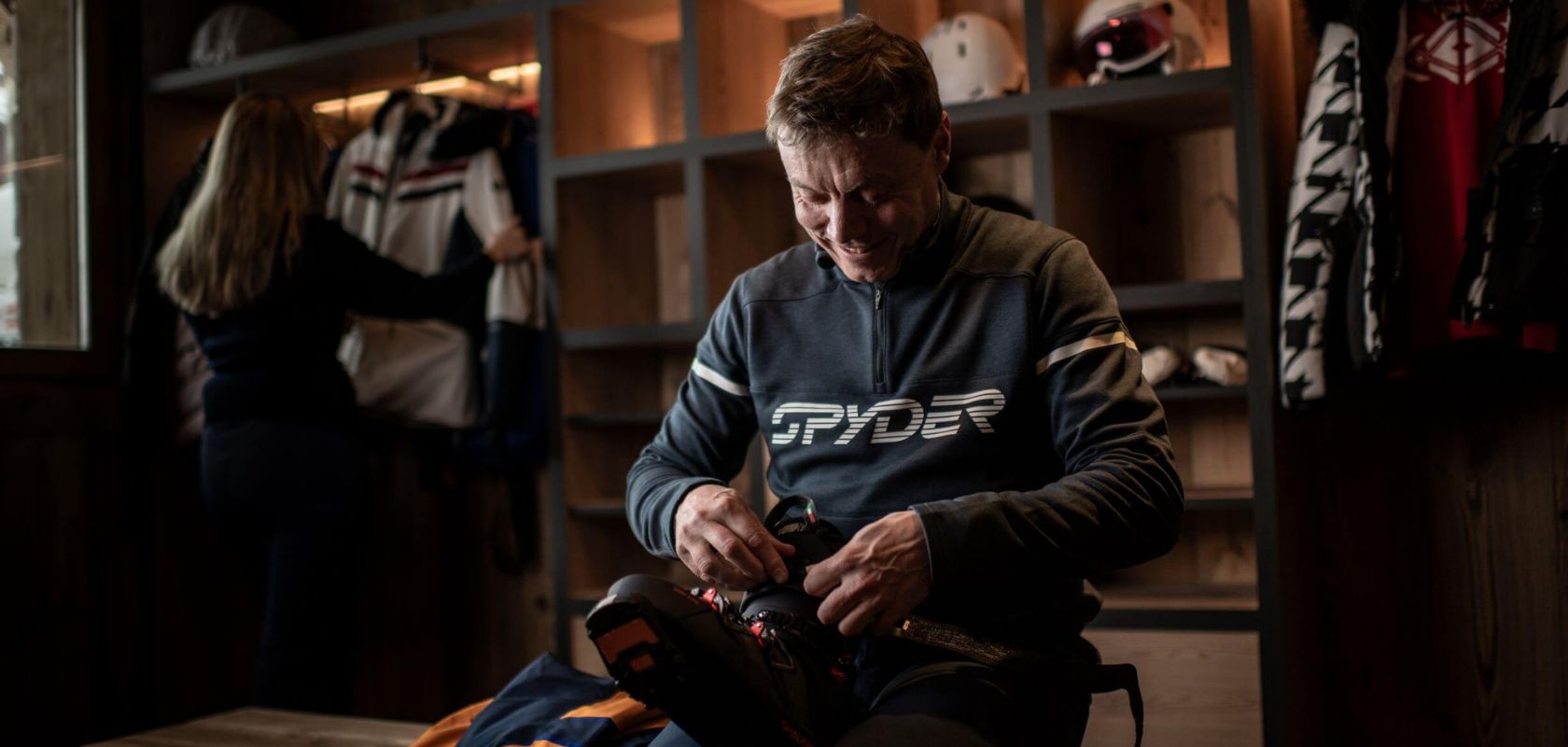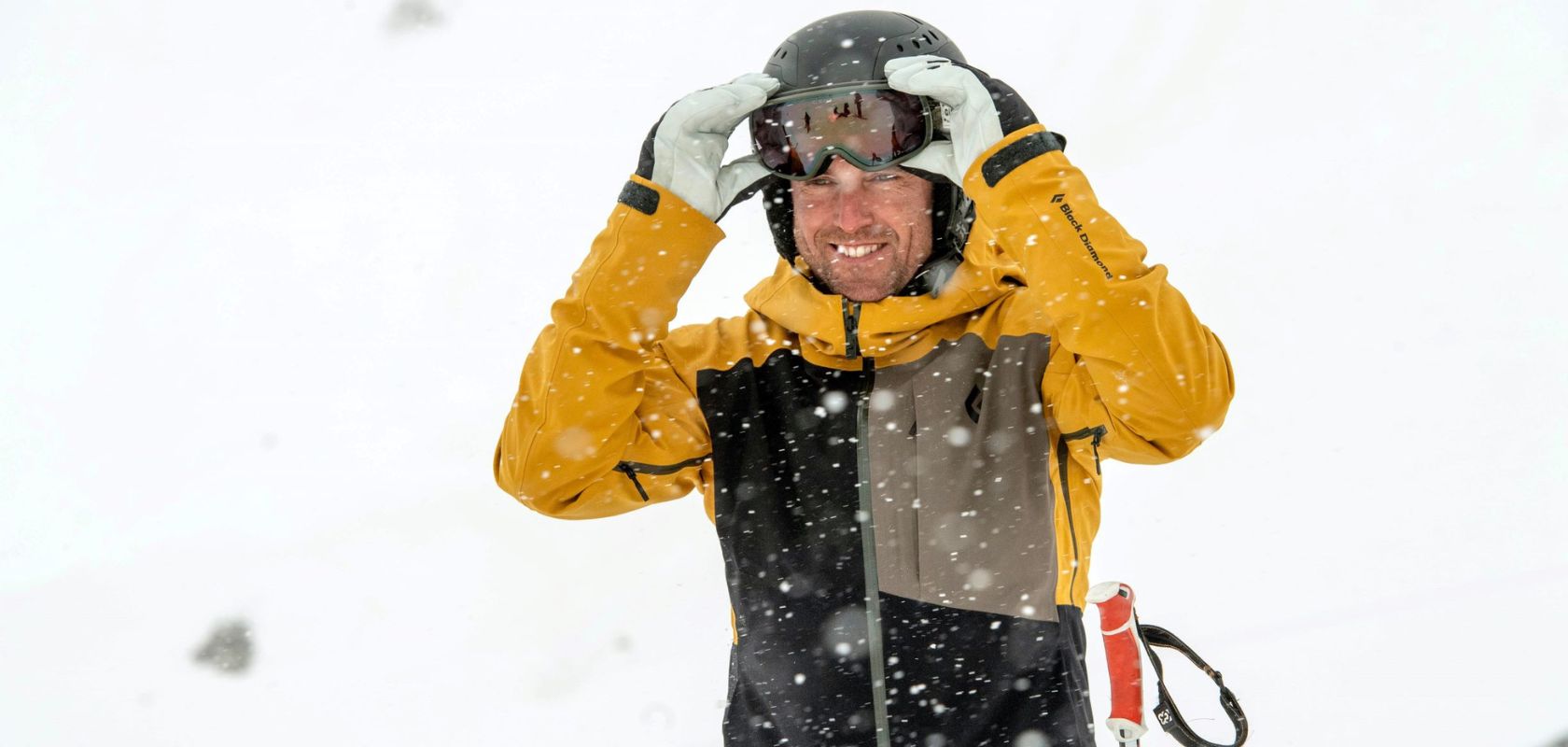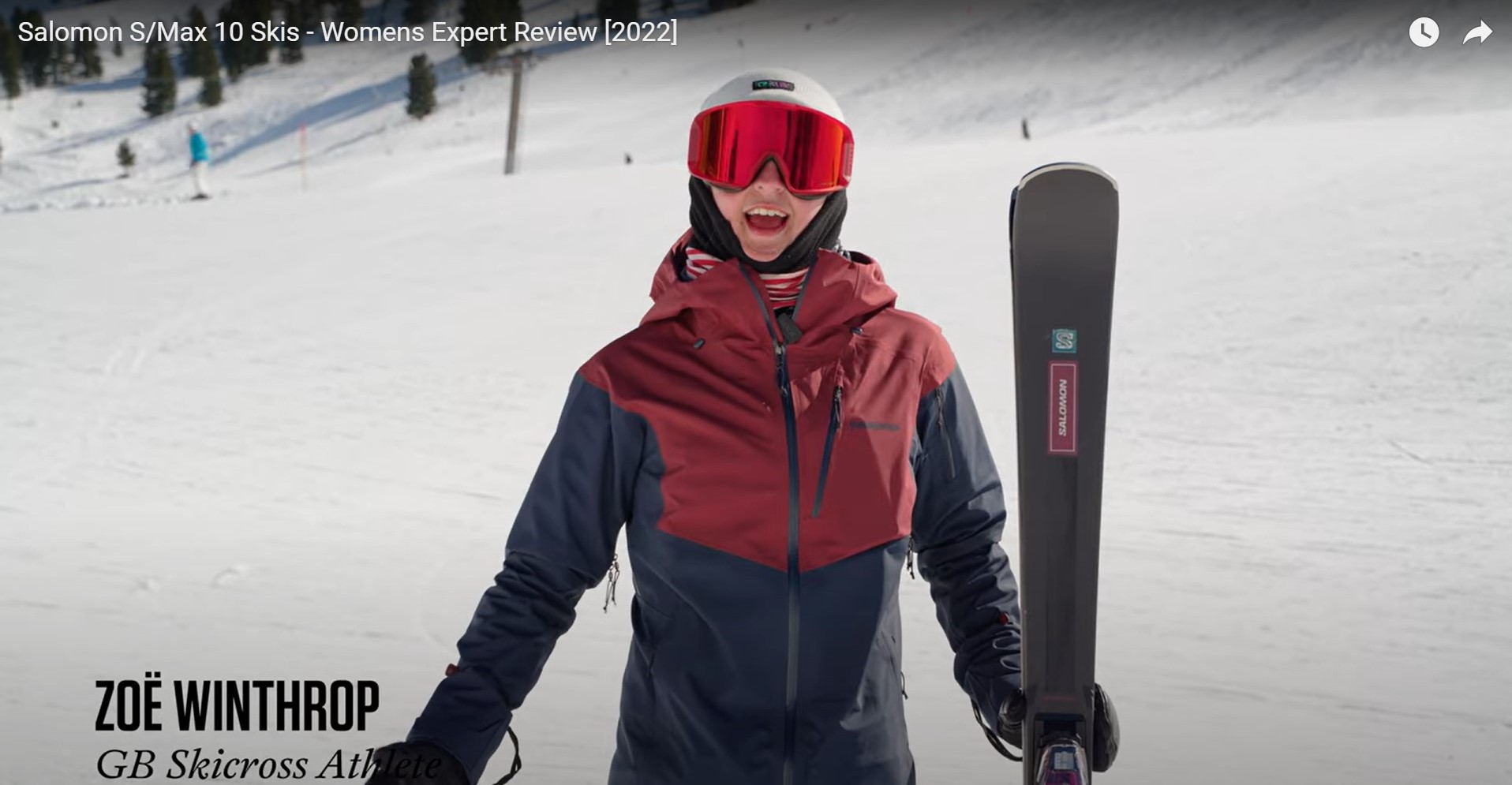HOW TO CHOOSE THE RIGHT SIZE SKI POLES

While there is no perfect formula or perfect height, the right ski poles can improve your performance, giving you a more responsive and enjoyable ski. Bear in mind that sizing will be personal to you, too long or heavy for your skiing style and they’ll likely get in the way, too short and you’re more likely to position yourself too far forward, throwing you off balance.
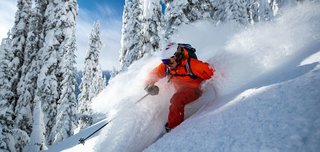
How do you find the right poles?
We’ll take you through the following steps to help you choose:
- What do ski poles do?
- Finding the right size
- Types of ski poles
- Ski pole materials
- Ski pole features
Our stores have a wide range of ski poles so if in doubt, visit us in store and get expert advice from our knowledgeable staff.
What Do Ski Poles Do?
For many skiers, ski poles are an essential piece of ski kit. Used properly, they're designed to help you balance, time your turns, and give you extra propulsion on the slopes.
For backcountry and alpine touring, poles can help you hike, and on flat they can help you skate and even pull your snowboarder friends along.
Many beginners, especially kids won’t be given ski poles until they are more competent on a range of terrain. New skiers tend to rely too heavily on poles for turning learning bad form such as throwing their body, leaning their weight too far back, standing upright, or letting them drag along the slope. Instead, you’ll often see beginner classes, pole-less, with their hands on their knees to instil good weight positioning and technique. Once they’ve mastered that, they are allowed ski poles.

Finding the Right Size Poles
Selecting the correct ski pole length is essential for comfort, balance, and performance on the slopes. The right size helps ensure proper technique and reduces fatigue, especially when skiing off-piste or tackling varied terrain.
How to Measure for the Right Ski Pole Size
- Stand upright in your ski boots to get an accurate measurement.
- Flip the ski pole upside down so the grip is touching the ground and the basket is just below your hand.
- Grip the pole just underneath the basket.
- Your arm should form a 90-degree angle at the elbow, or your forearm should be roughly parallel to the ground.
- If your elbow is at a sharper angle (less than 90 degrees), the pole may be too short.
- If your forearm points upward, creating an angle greater than 90 degrees, the pole may be too long.
Sizing Up
Many skiers prefer to ski with longer poles; ideal if:
- You like to plant your pole and turn
- You skate or traverse a lot of flat
- You also cross country ski
Sizing Down
Many skiers prefer to ski with shorter poles; ideal if:
- You ski in deep snow
- You ski all terrain parks
Types of Ski Poles
Freestyle + Park Ski Poles
When it comes to freestyle and park skiing, the needs and preferences for ski poles are quite different from those in all-mountain or alpine skiing. Park skiers often prioritise agility, balance, and safety, which influences their choice of ski poles.
Key Features of Freestyle & Park Poles
- Lightweight construction for easy handling and quick movements.
- Slimmer grips and shafts for a less obtrusive feel.
- Durable materials to withstand impacts and repeated drops.
- Minimalist baskets, since deep snow performance is less of a priority in the park.
Alpine Ski Poles
Alpine ski poles are the most popular and versatile type of ski poles, making them a top choice for the majority of skiers. Designed primarily for downhill skiing, these poles are engineered to provide balance, support, and rhythm on groomed slopes and can handle occasional off-piste adventures.
Key Features of Alpine Ski Poles
- Straight shaft for reliable performance and easy handling.
- Comfortable handle with a strap to ensure a secure grip and reduce the risk of losing the pole during a fall.
- Standard-sized basket at the bottom, ideal for hard-packed snow and groomed runs.
- Some models offer interchangeable or larger baskets for better performance in soft snow or powder conditions.

Powder + Backcountry Ski Poles
Powder and backcountry ski poles are specifically engineered to excel in deep snow and rugged, off-piste environments. These poles incorporate features that help skiers maintain stability, avoid getting stuck, and adapt to rapidly changing terrain.
Key Features of Powder & Backcountry Ski Poles
Larger Snow Baskets: Designed to “float” on top of soft snow, large powder baskets prevent poles from sinking too deeply or getting stuck, which is crucial for efficient movement in deep powder.
Durable Shafts: Backcountry poles often feature thicker or reinforced shafts, typically made from aluminum, carbon fiber, or a combination of both. Aluminum provides excellent durability and can withstand impacts from rocks and trees, while carbon fiber is lighter and reduces fatigue on long tours, though it may be more susceptible to damage from sharp impacts.
Adjustable Length: Many backcountry ski poles are adjustable, allowing skiers to change the pole length for different activities—shorter for descents, longer for skinning uphill. Adjustable poles also pack down easily for storage during hikes or travel.
Lightweight Construction: Reducing swing weight is a priority in powder and backcountry skiing. Lighter poles make it easier to maneuver and decrease fatigue during long ascents or technical descents.
Race Ski Poles
Race ski poles are highly specialised pieces of equipment, engineered to meet the demands of competitive skiing. Unlike standard alpine poles, racing poles are designed for speed, efficiency, and precision, making them a top choice for athletes and advanced skiers focused on performance.
Key Features of Race Ski Poles
Aerodynamic Shape: Race poles are often bent or shaped to contour around the skier’s body. This design minimizes air resistance (drag) during high-speed descents, helping racers maintain maximum velocity through the course.
Ergonomic Design: Handles and grips are tailored for a secure, comfortable hold, allowing for precise pole plants and quick hand transitions during turns.
Lightweight Construction: High-tech materials such as carbon fibre or fibreglass are commonly used. These materials offer exceptional strength-to-weight ratios, reducing fatigue and enabling rapid pole movements.
Smaller Baskets: Racing poles feature compact baskets to prevent them from catching on slalom gates or snow, allowing for smooth, uninterrupted runs.
Nordic + Cross Country Ski Poles
Nordic and cross country ski poles are purpose-built for endurance, efficiency, and power transfer across a range of activities, including classic cross-country skiing, skate skiing, trekking, and hiking. Their design reflects the unique demands of gliding over long distances on flat or rolling terrain, where maximising every push is crucial.
Key Features of Nordic / Cross Country Ski Poles
Lightweight and Stiff Construction: High-end poles are often made from 100% carbon fiber or advanced composites, offering exceptional stiffness for maximum power transmission while remaining featherlight to reduce fatigue over long distances. Entry-level or recreational poles may use aluminum for added durability at a slightly higher weight.
Slim, Ergonomic Shafts: The narrow diameter of these poles helps reduce swing weight and improve aerodynamics, allowing for quick, efficient pole plants and a natural arm swing.
Specialised Grips and Straps: Ergonomically shaped grips, often made from cork or rubber, provide comfort and control. Adjustable or quick-release straps help secure the pole to your hand, ensuring efficient power transfer and reducing hand fatigue during long sessions.
Different Basket Shapes: Baskets are designed to match the snow conditions and skiing style:
- Smaller, streamlined baskets for groomed tracks and skate skiing, minimising drag and preventing the pole from getting caught in the snow.
- Larger or interchangeable baskets for softer snow or off-track touring, providing better support and preventing the pole from sinking too deeply.
Ski Pole Materials
Aluminium - Most ski poles are aluminium; they’re lightweight and strong but still cost effective.
Fibreglass - Fibreglass has the highest strength to weight ratio of any ski pole material allowing them to be slimmer and lighter but still with exceptional performance. Fibreglass is popular amongst racers.
Carbon - Carbon fibre ski poles offer the highest strength to weight ratio but are more likely to snap, rather than bend like aluminium poles, in the unlikely event that they break. Carbon is often blended with other materials to make them more pliable.
Mixed materials- Some ski poles are made of a mix of materials including aluminium, fibreglass, carbon, resin etc. Composite ski poles, such as fibreglass and carbon mix, offer better shock absorption than aluminium but do cost more than traditional poles.

Ski Pole Features
Grips - Grips are usually made from plastic or rubber but you may see some made from cork. They are ergonomically shaped to your hand for an easy hold, especially in gloves.
The more expensive the pole the better the grips usually are, including moulded notches for individual finger grip.
Straps - Straps are designed to keep the pole attached to you wrist in case you drop it. They are usually adjustable and made from a strong, woven fabric, such as nylon, to prevent tearing.
Snow baskets - Surprisingly, snow baskets are an important feature of ski poles. Not only do they prevent your pole from sinking too far into the snow, they help to improve balance, and counter the heavier handled end.
Typically, baskets are either for hard snow or soft snow. Hard snow baskets are better for groomed pistes, park, and general all mountain riding. Soft snow baskets are bigger preventing them from sinking into powder so ideal for backcountry and off-piste.
Pole tips - Pole tips are small metal pieces pushed into the end to seal it and increase grip. They don’t differ much but cheaper ski poles will have a steel tip whereas more expensive ones might be a more durable material like carbide.
Ski Poles FAQs
To find the right ski pole length, flip the pole upside down and hold it just below the basket. With the grip on the floor, your elbow should form a 90-degree angle. If it’s less, choose a shorter pole; if more, go longer. This ensures proper balance and comfort on the slopes.
Aluminium ski poles are durable, affordable, and suitable for most skiers. Carbon poles are lighter and stronger, ideal for advanced or frequent skiers seeking top performance. Composite poles offer a balance of weight and strength, but usually at a higher price point.
Yes, basket size matters. Standard baskets are great for groomed runs, while larger powder baskets prevent sinking in deep snow. Some poles have interchangeable baskets, making them versatile for different snow conditions and terrain.
Park and pipe skiers often prefer shorter poles to avoid interference on jumps and rails. Some even ski without poles for maximum freedom and safety during tricks.
If you don’t have poles, measure from your elbow (bent at 90 degrees) to the ground, then add about two inches to account for the pole tip that sinks into the snow. This gives a good estimate for your ideal pole length.
Adjustable ski poles are great for those who ski varied terrain, as you can change the length for climbing, descending, or different snow conditions. They’re especially useful for backcountry and touring skiers.
Related Articles

Let us know you agree to cookies
We use marketing, analytical and functional cookies as well as similar technologies to give you the best experience. Third parties, including social media platforms, often place tracking cookies on our site to show you personalised adverts outside of our website.
We store your cookie preferences for two years and you can edit your preferences via ‘manage cookies’ or through the cookie policy at the bottom of every page. For more information, please see our cookie policy.
